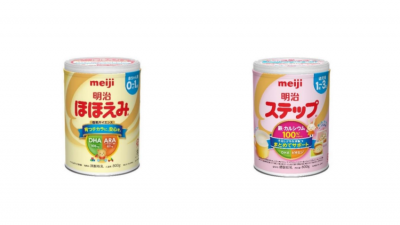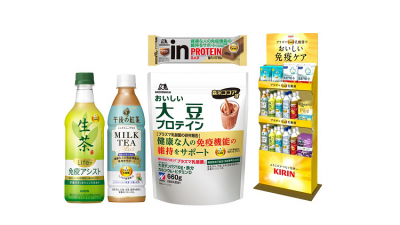“HMObiotics”: H&H deepens research on specific HMOs, probiotic pairings for health benefits

While HMOs are food for probiotics, just like how prebiotics are food for probiotics, ‘HMObiotics’ are ultimately different from synbiotics – the combination of pre/probiotics.
‘HMObiotics’ is defined as the combination of HMOs and probiotics that interact directly or indirectly in “a specific way” to confer or enhanced health benefits, Dr. Jonathan Lane, senior manager, global research at H&H Group told us.
“For us, the HMObiotic concept goes beyond synbiotic, beyond synergy or interactions between probiotics and prebiotics in the traditional way,” he said.
Recently, the Hong Kong stock exchange-listed firm completed a study which showed how the combination of four Bifidobacterium strains could better utilise HMOs and produce beneficial metabolites through specific pathways.
The existing understanding is that Bifidobacterium – the dominant bacteria species in the gut microbiota of healthy, breast-fed infants – feeds on HMOs to multiply the itself and also to produce beneficial metabolites.
The study aims to find if simply a strain of Bifidobacterium, or a specific combination of Bifidobacterium strains, is required to optimise the utilisation of HMOs and production of metabolites.
The gut, breastmilk, and skin microbiome compositions are three key areas that the company is researching on when it comes to the microbiome.
In its 2021 Sustainability Report published last Friday, the firm also highlighted that it would explore the different biotics, including pre-, pro-, syn-, and postbiotics concepts that have promising gut health function, microbial interactions, and gut-axis consumer benefits.
The combination
This particular preclinical research showed that four commercial infant-derived Bifidobacterium, namely Bifidobacterium bifidum R0071, Bifidobacterium breve M-16V, Bifidobacterium infantis R0033, and Bifidobacterium infantis M-63, had increased bifidobacterial numbers in the gut, as compared to the use of a single Bifidobacterium strain.
For instance, the relative abundance of B. breve had increased by over 30 per cent, and there was a higher production of metabolites such as formate, acetate, 1,2-propanediol, and lactate.
Three HMO substrates were used in the research, namely the commonly used 2’-fucosyollactose (2’-FL) and oligosaccharides isolated from human milk.
Findings were published in Scientific Reports.
“Our research highlights the role of human blood sugars or HMOs by discovering unique HMO-microbe interactions which promote a syntrophic relationship between different Bifidobacterium species,” said Clodagh Walsh, lead researcher of this study.
“Specifically, we observe the inability of one Bifidobacterium subspecies – Bifidobacterium breve – to grow well in the presence of HMOs.
“However, in the presence of another Bifidobacterium subspecies – Bifidobacterium bifidum – significant growth of Bifidobacterium breve in the presence of HMOs was observed.
“So here we are seeing how one Bifidobacterium can support the growth of another by breaking down HMOs on the bacterial cell surface and thereby providing more simple sugars that support the growth of the other Bifidobacterium.
“We see the central relationship maintained in a more competitive environment with four Bifidobacterium strains, which was also associated with the increased production of health promoting bacterial metabolites, their short chain fatty acids,” Walsh explained.
These organic acids produced in turn help to reduce intestinal pH level, and therefore inhibit pathogenic bacteria.
It was also been suggested that these metabolites can improve intestinal barrier function and contribute to immune system development, she added.
Specificity is the key
From the findings, the researchers emphasised the importance of using “specific” probiotic strains to achieve health benefits – as opposed to the conventional idea of using more strains and a higher CFU count.
“I suppose there are a lot of products that contain multiple probiotics, high CFU numbers. And for us, we see that as the past.
“Our research and the research of others highlight the unique relationship between probiotics, prebiotics, postbiotics and other ingredients that drive health benefits. So for us, it's not a matter of the more probiotics, the better.
“Rather, evidence suggests that it's about selecting specific probiotics which are clinically proven for health benefits, and then combining them with specific ingredients that further support or enhance those health benefits. So, I think a key word here is specificity,” said Dr. Lane.
The company is embarking on the ambitious project of identify other HMO probiotic combinations, document their benefits via preclinical research, and proceed to clinical research to validate the benefits.
This is also an opportune time for such research, as there are more HMOs structures identified and approved for use in foods by regulators around the world.
“Ultimately, it has given us a new way of thinking product developments, that it's not essentially one plus one equals two. It's now one plus one could be equal to three in terms of supporting or enhancing that health benefit.
“And that really comes down to specificity and selection [of the HMOs and probiotics],” he said.
While the current findings showed the benefits of probiotic strains that could metabolise HMOs, the company is also interested in studying probiotics that cannot metabolise HMOs.
The reason is because these probiotics could potentially increase the number of beneficial gut bacteria via indirect interactions.
R&D priorities
Infant nutrition is a key pillar of H&H Group's R&D priorities.
The company has identified two key areas fuelling its innovation pipelines for its babycare portfolio, according to its sustainability report.
Of which, the development of HMO combinations for applications in infant and children's supplement products is one area.
The other area is conducting investigative trials and overall formulation optimisation for infant formula natural fat blends and protein nutritional quality.
























